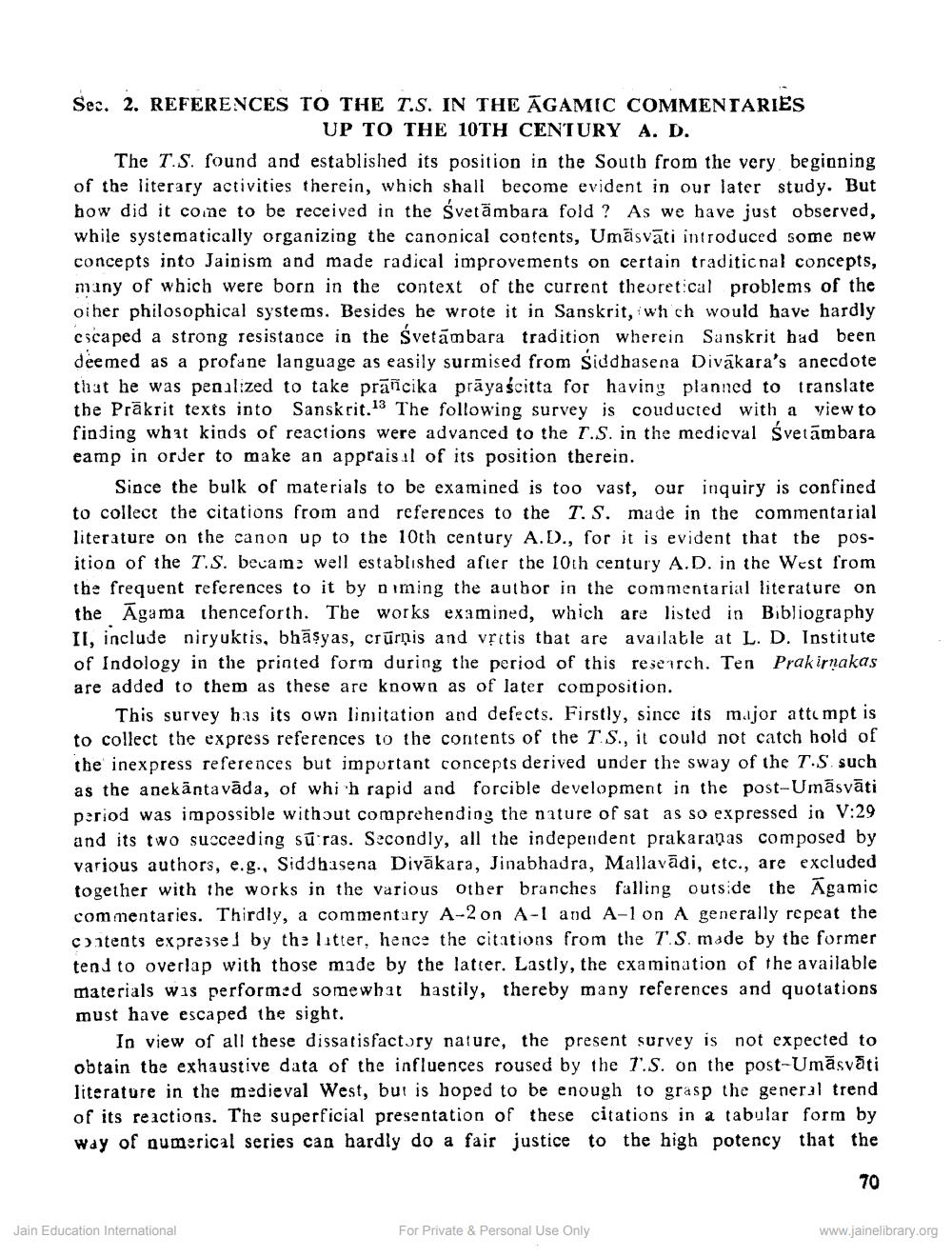________________
Sec. 2. REFERENCES TO THE T.S. IN THE AGAMIC COMMENTARIES UP TO THE 10TH CENTURY A. D.
The T.S. found and established its position in the South from the very beginning of the literary activities therein, which shall become evident in our later study. But how did it come to be received in the Svetambara fold? As we have just observed, while systematically organizing the canonical contents, Umäsvati introduced some new concepts into Jainism and made radical improvements on certain traditional concepts, many of which were born in the context of the current theoretical problems of the other philosophical systems. Besides he wrote it in Sanskrit, which would have hardly escaped a strong resistance in the Svetambara tradition wherein Sanskrit had been deemed as a profane language as easily surmised from Siddhasena Divakara's anecdote that he was penalized to take pracika prayaścitta for having planned to translate. the Prakrit texts into Sanskrit.13 The following survey is couducted with a view to finding what kinds of reactions were advanced to the T.S. in the medieval Śvetambara eamp in order to make an appraisal of its position therein.
Since the bulk of materials to be examined is too vast, our inquiry is confined to collect the citations from and references to the T. S. made in the commentarial literature on the canon up to the 10th century A.D., for it is evident that the position of the T.S. became well established after the 10th century A.D. in the West from the frequent references to it by niming the author in the commentarial literature on the Agama thenceforth. The works examined, which are listed in Bibliography Il, include niryuktis, bhasyas, cruris and vectis that are available at L. D. Institute of Indology in the printed form during the period of this research. Ten Prakirṇakas are added to them as these are known as of later composition.
This survey has its own limitation and defects. Firstly, since its major attempt is to collect the express references to the contents of the T.S., it could not catch hold of the inexpress references but important concepts derived under the sway of the T-S such as the anekantavāda, of whi h rapid and forcible development in the post-Umāsvāti period was impossible without comprehending the nature of sat as so expressed in V:29 and its two succeeding sutras. Secondly, all the independent prakarapas composed by various authors, e.g., Siddhasena Diväkara, Jinabhadra, Mallavädi, etc., are excluded together with the works in the various other branches falling outside the Agamic commentaries. Thirdly, a commentary A-2 on A-I and A-1 on A generally repeat the contents expressed by the litter, hence the citations from the T.S. made by the former tend to overlap with those made by the latter. Lastly, the examination of the available. materials was performed somewhat hastily, thereby many references and quotations must have escaped the sight.
In view of all these dissatisfactory nature, the present survey is not expected to obtain the exhaustive data of the influences roused by the 7.S. on the post-Umāsvāti literature in the medieval West, but is hoped to be enough to grasp the general trend of its reactions. The superficial presentation of these citations in a tabular form by way of numerical series can hardly do a fair justice to the high potency that the
70
Jain Education International
For Private & Personal Use Only
www.jainelibrary.org




